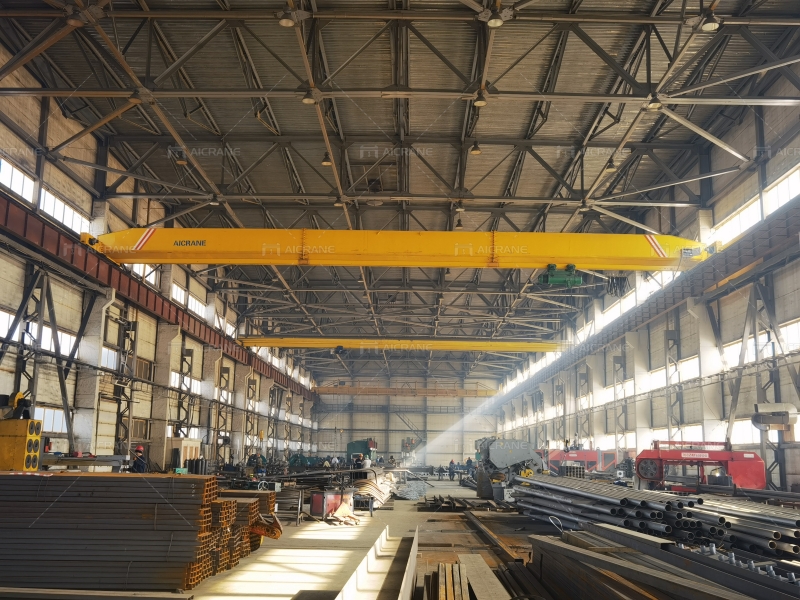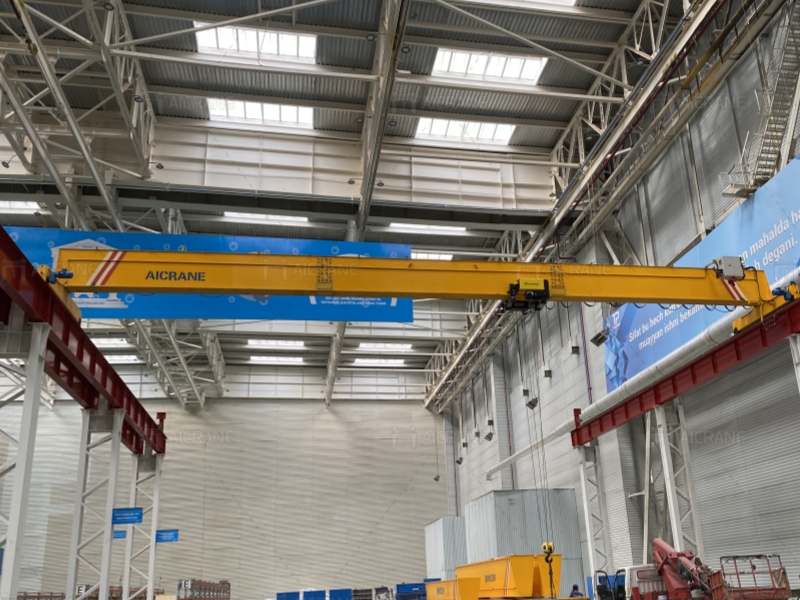In the realm of industrial operations, space utilization is a critical factor in maximizing efficiency, productivity, and profitability. Limited floor space coupled with the need to store and move large volumes of materials presents a significant challenge for businesses. However, overhead cranes offer a solution by providing vertical storage capabilities and enabling efficient material handling processes. This article delves into the role of overhead cranes in optimizing space utilization within industrial facilities.
Vertical Storage Solutions
Traditional material handling equipment, such as forklifts and conveyors, often require extensive floor space for operation and storage. In contrast, overhead cranes operate(Мостовой кран в цеху) within the overhead airspace, utilizing vertical space that would otherwise remain unused. This vertical storage capability enables businesses to maximize storage capacity without expanding their footprint, effectively doubling or even tripling available storage space.
By lifting and transporting materials to elevated storage areas, overhead cranes facilitate efficient use of vertical space within warehouses, distribution centers, and manufacturing facilities. This not only increases storage capacity but also improves accessibility, organization, and inventory management, leading to enhanced operational efficiency and cost savings.

Flexible Layout Design
The versatility of overhead crane systems allows businesses to design flexible layout configurations that optimize space utilization. Unlike fixed-position equipment or static storage solutions, overhead cranes can traverse the length and breadth of a facility, accessing materials stored in various locations with ease.
This flexibility enables businesses to adapt to changing operational requirements, accommodate fluctuations in inventory levels, and optimize workflow efficiency. Overhead crane systems can be configured with multiple runways, switch tracks, and interlocking systems to create dynamic storage and retrieval solutions tailored to specific application needs.
High-Density Storage
In addition to facilitating vertical storage, overhead cranes(Кран мостовой двухбалочный) enable businesses to implement high-density storage solutions that maximize space utilization within industrial facilities. By utilizing racks, shelves, and stacking systems designed for overhead crane operation, businesses can store materials in a compact and organized manner, reducing the footprint required for storage.
High-density storage systems, such as pallet racking, cantilever racks, and mezzanine platforms, allow businesses to store materials vertically while maintaining accessibility for retrieval and handling. This efficient use of space minimizes wasted space and aisle widths, increases storage density, and enhances overall storage capacity within the facility.
Streamlined Material Handling Processes
Optimizing space utilization with overhead cranes extends beyond storage solutions to include streamlined material handling processes. Overhead crane systems(Мостовой кран 100 тонн) enable businesses to move materials between storage areas, production lines, and shipping docks with speed and precision, minimizing handling times and maximizing workflow efficiency.
By automating material handling tasks and reducing reliance on manual labor, overhead cranes streamline operational workflows, minimize congestion, and improve overall productivity. This efficient movement of materials throughout the facility ensures that space is utilized effectively, eliminating bottlenecks and optimizing the flow of goods from receipt to distribution.

Enhanced Safety Measures
In the pursuit of optimizing space utilization with overhead cranes, safety remains paramount. While overhead cranes offer significant benefits in terms of storage efficiency and material handling, it’s essential to implement enhanced safety measures to mitigate potential risks associated with their operation.
Advanced safety features such as collision avoidance systems, overload protection, and emergency stop mechanisms are integrated into overhead crane systems to ensure safe operation. Additionally, safety protocols, including regular inspections, maintenance schedules, and operator training, are crucial for minimizing the risk of accidents and injuries. Visit website:https://www.aicrane.ru/
Furthermore, zoning and access control systems can be implemented to restrict access to areas where overhead cranes operate, preventing unauthorized personnel from entering hazardous zones. Safety barriers, signage, and warning lights also contribute to creating a safe working environment and reducing the likelihood of accidents.
Conclusion: Unlocking Efficiency and Productivity
In conclusion, overhead cranes play a pivotal role in optimizing space utilization within industrial facilities, enabling businesses to maximize storage capacity, create flexible layout designs, implement high-density storage solutions, and streamline material handling processes. By utilizing vertical space effectively and optimizing workflow efficiency, businesses can unlock new levels of efficiency, productivity, and cost savings.
As businesses continue to seek ways to optimize their operations and maximize the value of their assets, overhead cranes will remain indispensable tools for optimizing space utilization and driving operational excellence. By leveraging the capabilities of overhead crane technology and embracing innovative storage and handling solutions, businesses can stay competitive and thrive in the dynamic landscape of modern industry.